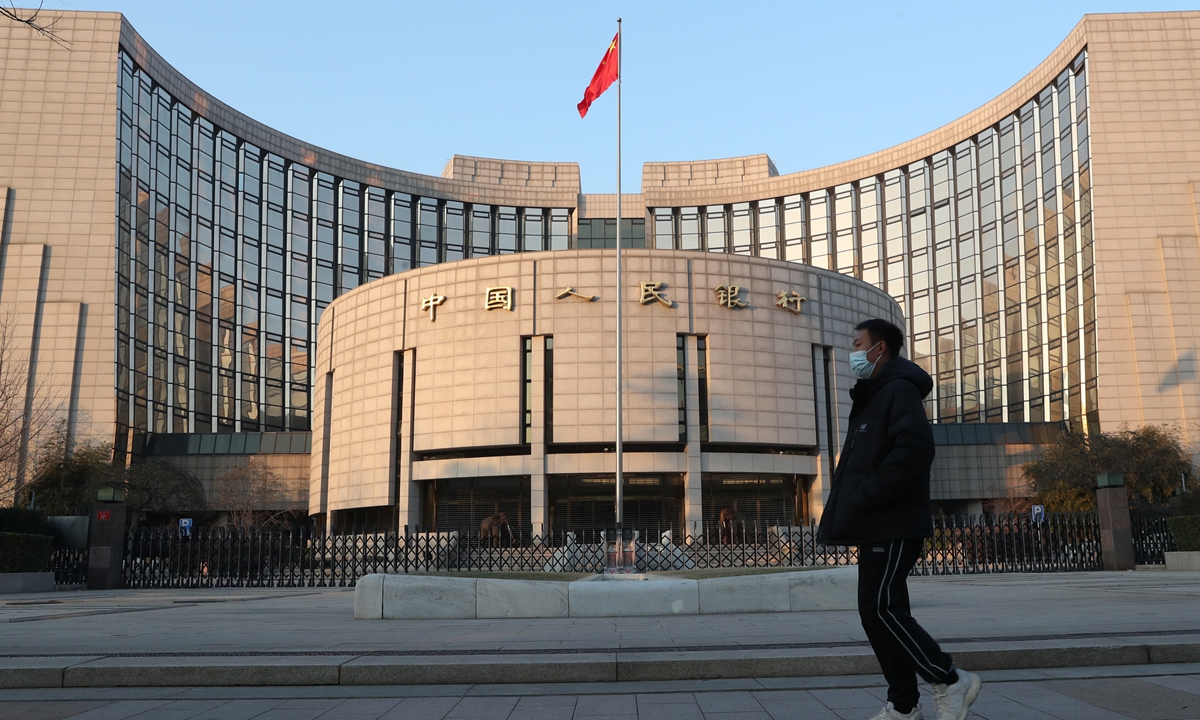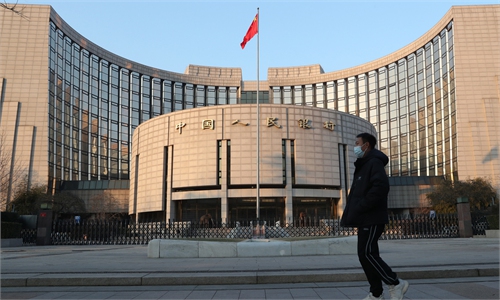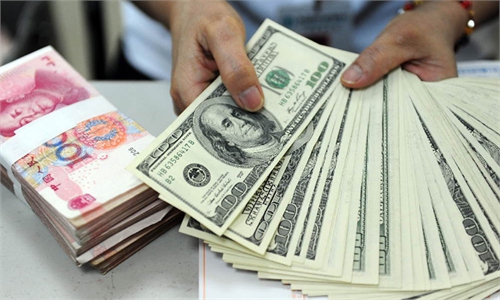China’s central bank vows use of multiple policy tools, prioritizing stability in complex, uncertain environment
Stability tops central bank’s priorities in complex, uncertain environment

China's central bank Photo: CFP
China's central bank vowed on Monday to use multiple monetary policy tools to maintain reasonable and ample liquidity to shore up the country's slowing economy.Monetary policy changes in the US and other countries are also on the radar of the central bank, which pledged to step up policy support to bolster growth, employment and price stability, according to a quarterly report on the country's monetary policy implementation.
Championing the central bank's pro-growth yet prudent stance, market watchers argued against any aggressive monetary actions in the face of the US Federal Reserve's radical rate-hiking path.
China's prudent monetary policy will ramp up support to the real economy, prioritize stability and actively tackle multiple situations to shore up confidence, the People's Bank of China (PBC), the country's central bank, said in its first-quarter policy report.
It reiterated its earlier stance not to resort to a flood of stimulus and vowed to "do a good job" on cross-cyclical adjustment.
As part of efforts to keep economic operations within a reasonable range, the central bank pledged more monetary policy support to aid micro-sized and small enterprises, as well as industries that are mired in difficulty due to the epidemic.
All monetary policy tools will be leveraged to keep reasonable and ample liquidity, and to strengthen the stability of growth in credit, the bank said, adding that it will maintain the basic stability of the macro leverage ratio.
There should be active "additions" to structural monetary policy, such as guiding financial institutions to issue loans to enterprises that are severely hit by the epidemic, elevating the re-lending quota for supporting agricultural and small enterprises, and re-using the special re-lending facility to support clean and efficient use of coal.
The central bank also noted that it will improve the market-based mechanism for interest rate formation and transmission, and strengthen oversight of deposit rates. It eyes stabilizing the costs of debt for banks and pushing for reduced financing costs for businesses.
In response, the country's biggest state-owned banks including Industrial and Commercial Bank of China, Agricultural Bank of China and Bank of China and the majority of joint-stock banks have lowered interest rates on fixed-term deposits maturing in a minimum of one year and large-denomination certificates of deposit since late April, the central bank report said.
In the last week of April, the weighted average rate on new deposits at the country's financial institutions stood at 2.37 percent, down 10 basis points from the previous week.
Big state-owned commercial banks would strive for the addition of 1.6 trillion yuan of new loans for small and micro-sized firms in 2022, according to measures unveiled Monday by the Ministry of Industry and Information Technology that aim at bailing out smaller businesses in financial trouble.
Reduced deposit rates serve to ease the burden on banks, thereby allowing them to offer loans at a more affordable rate, Lian Ping, head of Zhixin Investment Research Institute, told the Global Times on Monday.
But now there's not much leeway left for further cuts in deposit rates, according to Lian.
Factoring in the Fed's fast-paced rate hikes, China is expected to maintain a prudent monetary policy, meaning the central bank wouldn't move aggressively to cut reserve requirements or the loan prime rate in the near future.
The Fed on Wednesday decided to raise its key federal funds rate by half a percentage point, the largest move in 22 years. The decision followed a 25 basis point rate hike in March as the US shifted its policy focus to battling runaway inflation.
In the Monday report, the central bank said that it will keep a close watch on monetary policy fine-tuning in major developed economies, with a focus on China's own monetary policy, while striking a balance between policy independence and global monetary policy trends.
Xu Weihong, vice president of Yongxing Securities, told the Global Times on Monday that there's still a likelihood of one or two more cuts in reserve requirement ratios, by 25 basis points apiece, in the remainder of the year. The central bank announced in April a universal 25-basis-point of reduction in banks' reserve requirement ratio that will release about 530 billion yuan ($83.18 billion) in long-term capital.
On top of that, as Lian pointed out, the use of structural re-lending facilities that are intended to funnel money to areas in need of bailouts would be among the PBC's choices. Such facilities, coming at a preferential rate, would lower the financing costs for businesses, he said.
In the quarterly report, the central bank also vowed to strengthen expectation management as well as macro-prudential management of cross-border capital flows in a bid to ensure normal foreign exchange market operations and keep the yuan's exchange rate basically stable in the coming months.
The yuan further weakened against the US dollar, with the onshore yuan softening by more than 500 basis points to around 6.72 per dollar during intraday trading on Monday, hitting its lowest point since November 2020.
Analysts said that the Chinese central bank has a variety of tools to maintain the yuan's exchange rate in a reasonable range, while China's sound economic fundamentals will support a stable yuan in the long term.



